I Solved This Viral Geometry Puzzle In 1 Minute! Can You Do Better?
Catriona Agg’s Math Puzzle Challenge 7
Somehow the Pythagorean theorem comes up in these geometry puzzles time and time again.
But if you are feeling creative, you might be able to come up with an approach that doesn’t involve triangles.
Now can you solve this faster than me?
Grab a pen and a piece of paper, and crack on!
Solution
We start by annotating the diagram and construct a cyclic quadrilateral PAFD.
First notice the angle AFD is equal to the right angle AFC and bisected angle CFD, which is 90 + 45 = 135 degrees.
A property of cyclic quadrilaterals is that the opposite angles sum to 180 degrees. This is how we find angle APD as 45 degrees.
Once we get that out of the way, we construct lines from the center O to points A and D on the circle.
The angle it subtends is double that of angle APD. This is a circle theorem that GCSEs students would know in the UK.
So we get a nice right-angled triangle in the middle.
Then using Pythagorean theorem, we can find the length of AD, which is the diagonal of the two squares.
Now we consider another right-angled triangle ABD. We label the sides as x and 2x.
Now do you see where we are going?
In fact we don’t even need to solve for the individual value of x because what we are looking for is the sum of the areas of the two squares, which is 20.
7 down. 307 more to go!
If you or anyone you know want to have online math lessons, please check out my tutoring site here. Thank you!
Barry — Online Maths tutor
40£/h : I offer tutoring in the following: GCSE Maths & Further Maths (All Exam Boards) A Level Maths & Further Maths…www.superprof.co.uk
Thank you so much for reading Math Games today, whether you are a math fan, an engineer, a lecturer, a banker, a scientist, or simply some curious soul who stumbled upon this article, I am happy that you stayed till the end. If you enjoyed this algebra puzzle and believe in math education, please consider supporting here 🪙. It would help out my life and this blog a lot. Thanks!



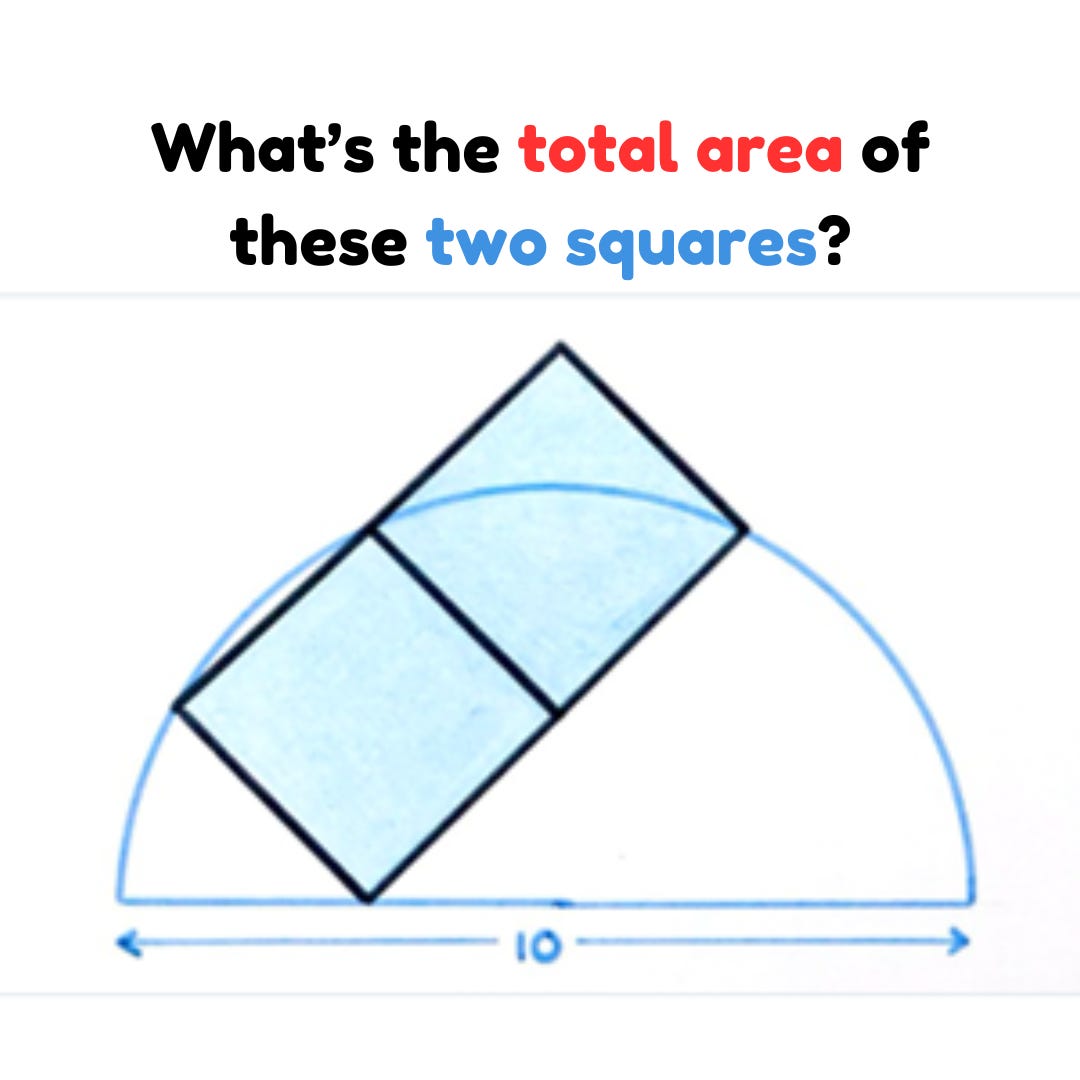

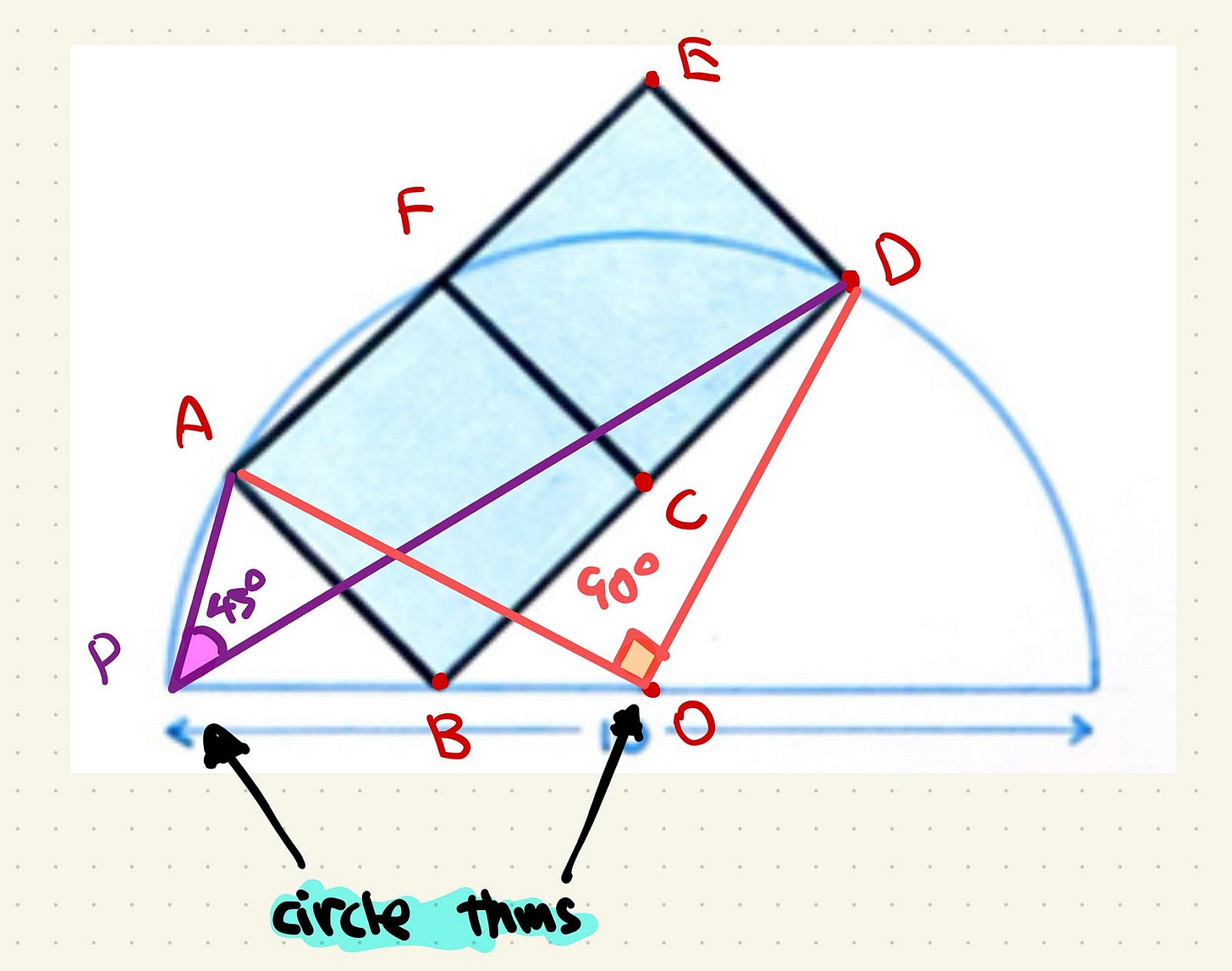
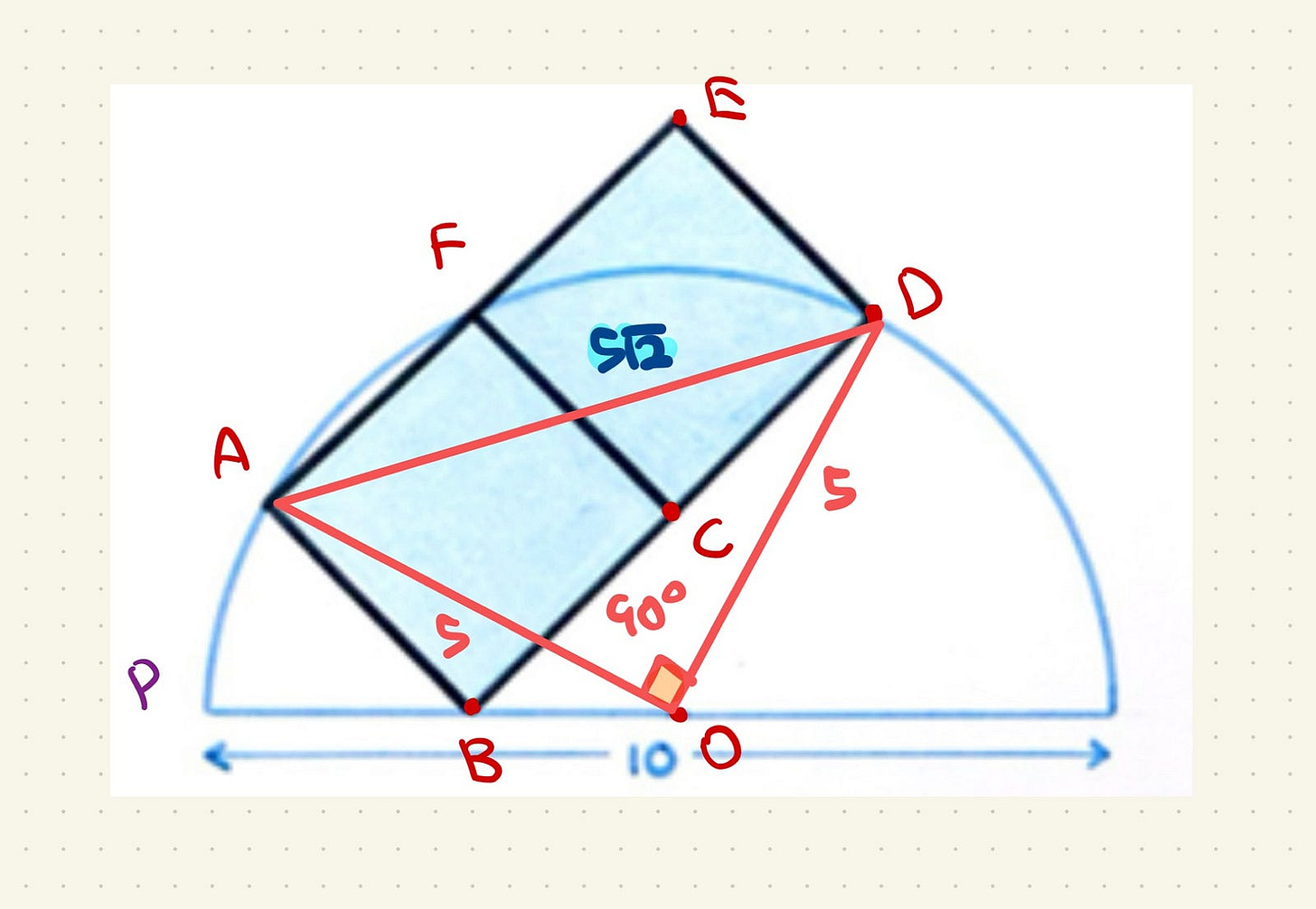
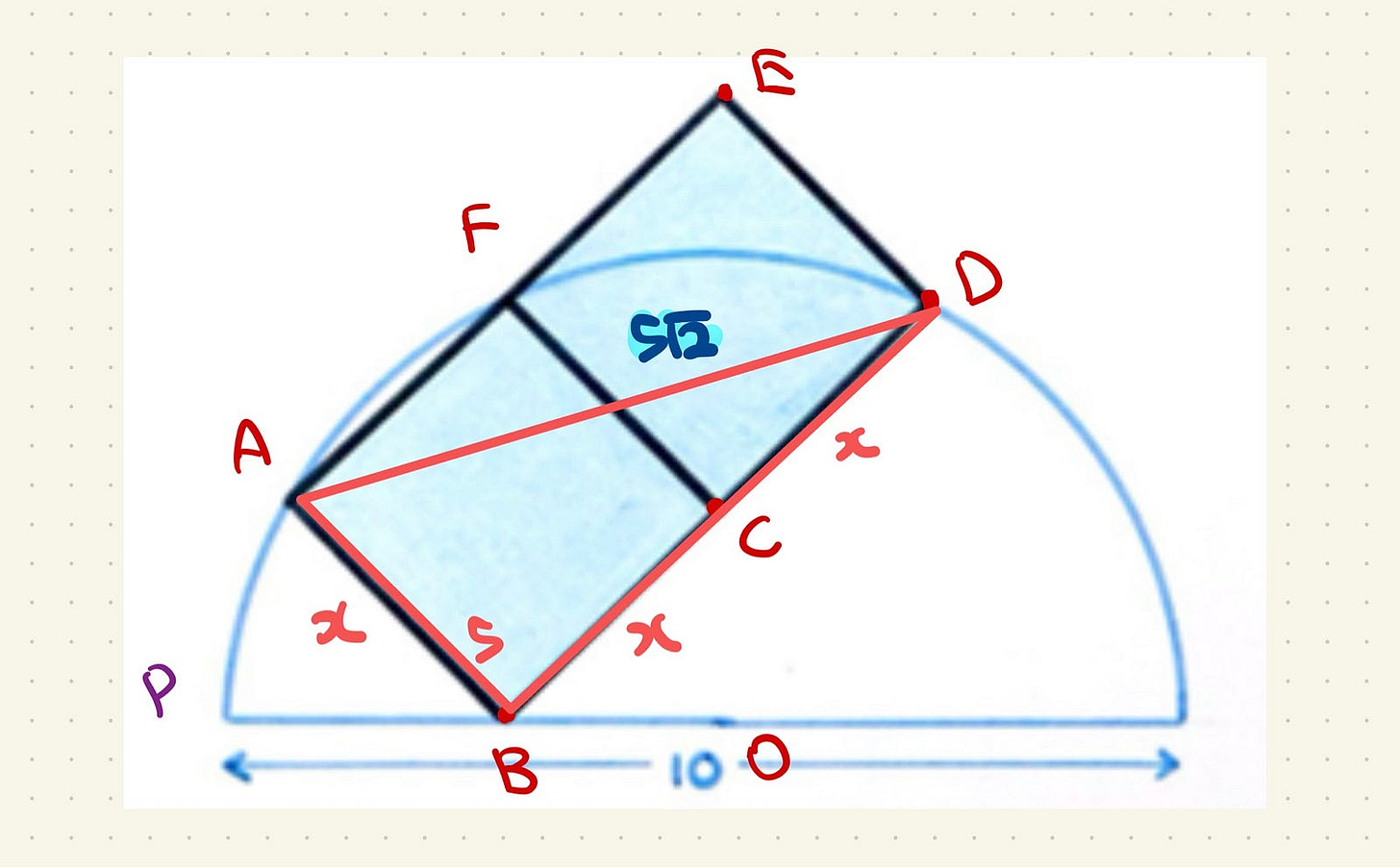
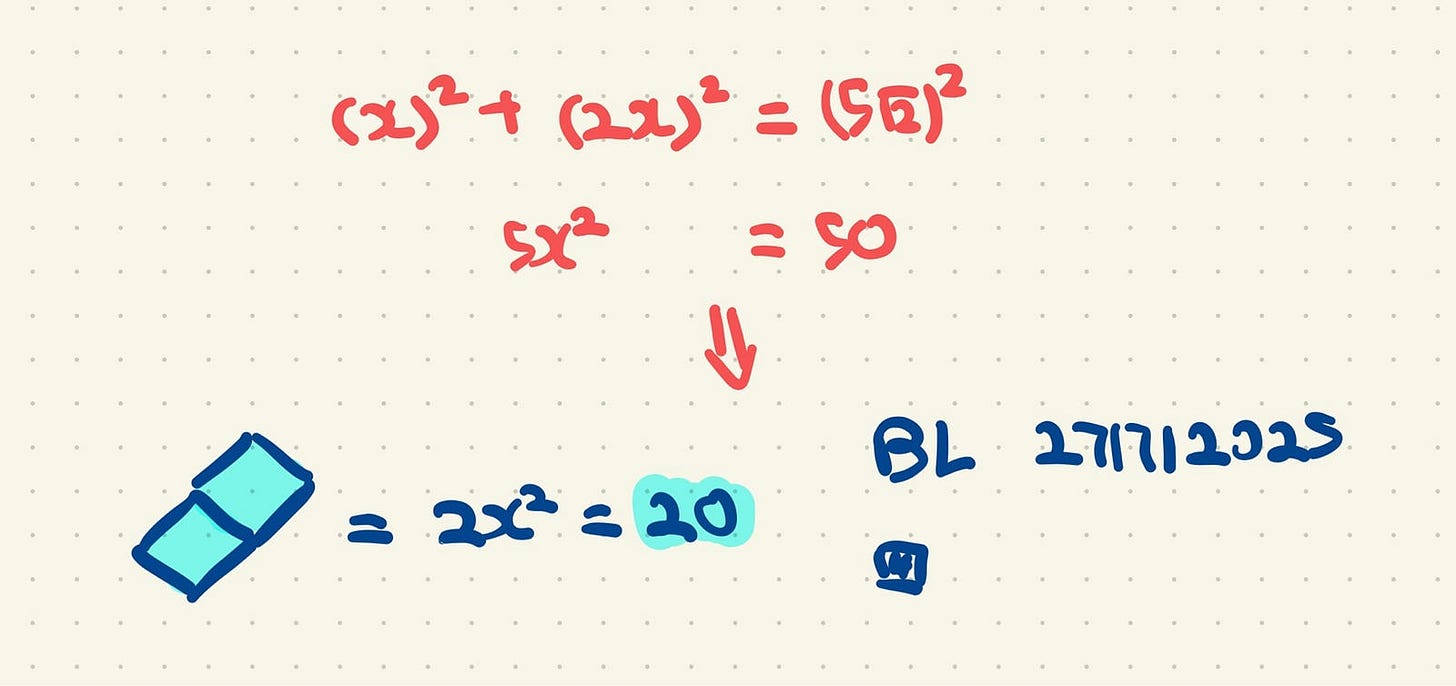



Yes, I knew about that one. 😊🥰It is about the midpoint angle is the double size of the other one. But it is upside down from what I have learnt. Idiot…
I did not know that the sum of opposite angles are 180° for quite small quadrilaterals, but of course it must be. Otherwise it is not a rule. Then we have that new theorem that is the great opener for the solution. Do you have a name for it? I have never seen it.